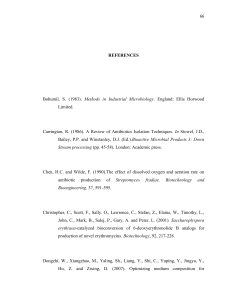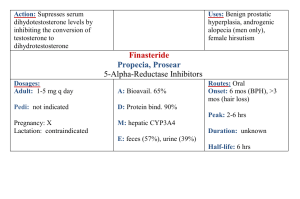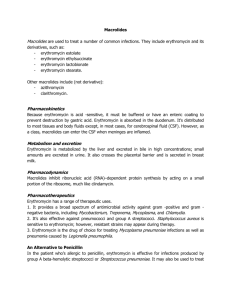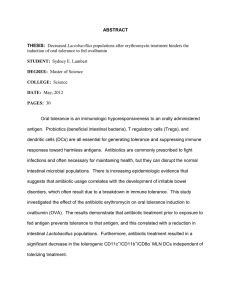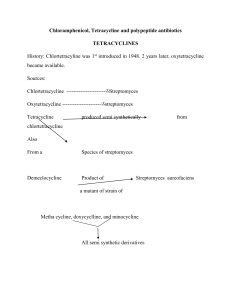CHAPTER I INTRODUCTION 1.1
advertisement
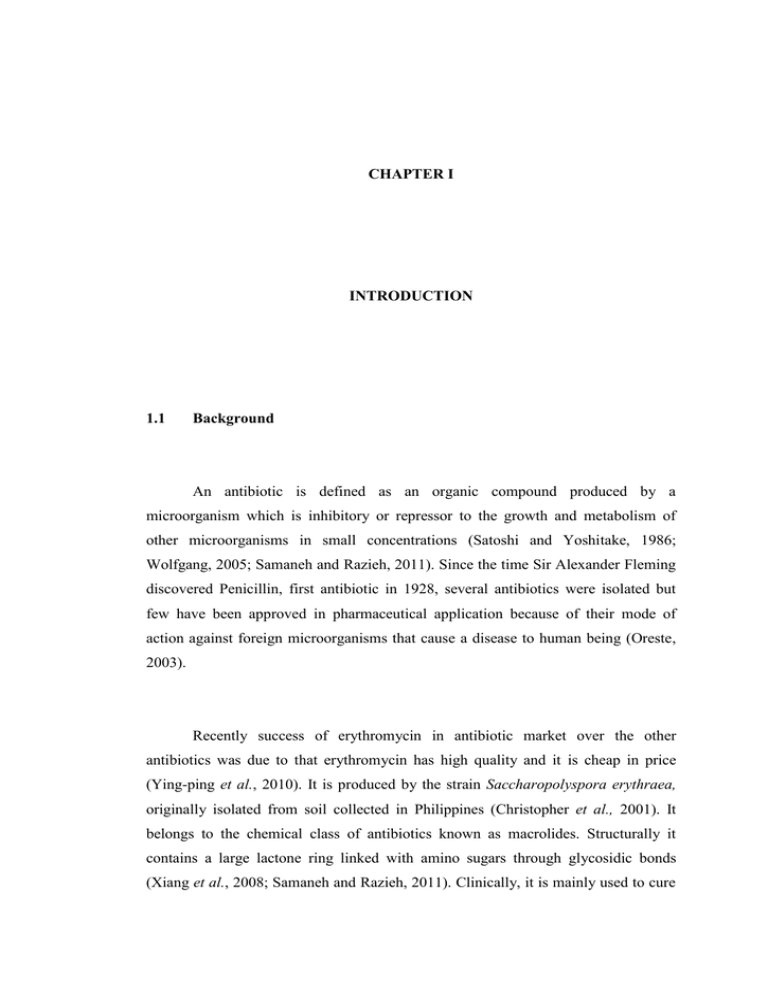
CHAPTER I INTRODUCTION 1.1 Background An antibiotic is defined as an organic compound produced by a microorganism which is inhibitory or repressor to the growth and metabolism of other microorganisms in small concentrations (Satoshi and Yoshitake, 1986; Wolfgang, 2005; Samaneh and Razieh, 2011). Since the time Sir Alexander Fleming discovered Penicillin, first antibiotic in 1928, several antibiotics were isolated but few have been approved in pharmaceutical application because of their mode of action against foreign microorganisms that cause a disease to human being (Oreste, 2003). Recently success of erythromycin in antibiotic market over the other antibiotics was due to that erythromycin has high quality and it is cheap in price (Ying-ping et al., 2010). It is produced by the strain Saccharopolyspora erythraea, originally isolated from soil collected in Philippines (Christopher et al., 2001). It belongs to the chemical class of antibiotics known as macrolides. Structurally it contains a large lactone ring linked with amino sugars through glycosidic bonds (Xiang et al., 2008; Samaneh and Razieh, 2011). Clinically, it is mainly used to cure 2 respiratory infection related diseases (Wolfgang, 2005; Ying-ping et al., 2010). With regard to antimicrobial spectrum and clinical utility, it matches to penicillin, but it is also active against organisms that become resistant to penicillin and streptomycin. For this reason, it is often recommended or suggested to those patients with allergies when penicillin is prescribed. As stated by Ju et al. (2008) recently, erythromycin received much attention because of the increasing applications of its semi-synthetic modified derivatives to infection diseases, such as azithromycin, roxithromycin and clarithromycin. Research done by El-Enshasy et al. (2007) described that nowadays erythromycin was also used for treatment of feeding intolerance in preterm infants, and as an antimalarial in combination with other drugs to reduce the pathogen resistance. Several researchers were previously studied improvement and optimization of the medium components for high erythromycin production using classical medium optimization. However, according to existed literature review pertains to the optimization and productions of this antibiotic, few studies have previously conducted optimization of medium components such as carbon, nitrogen and phosphate sources using response surface methodology (RSM). The aim of this study was to optimize medium components for high erythromycin antibiotic production by the strain S. erythraea via submerged fermentation using statistical technique known as response surface methodology (RSM). Moreover, the growth curve of media before and after optimized was also experimented, in addition effects of pH controlled and uncontrolled mode towards the antibiotic production was performed in 16-L Bioreactor 3 1.2 Problem Statement Medium components for high erythromycin production by Saccharopolysora erythraea have been researching for several years and it was observed that the cultivation of erythromycin was affected by the composition of cultivation media. According to previous researchers, very few authors were reported the optimization of media compositions for high erythromycin production by statistical method. Therefore, there is a great demand for optimization of medium composition by the application of response surface methodology to maximize erythromycin production, decrease time and cost. 1.3 Objective of the Study The main objective of the present work is to maximize erythromycin production through optimization of media composition by Saccharopolyspora erythraea WICC-B12 using Response Surface Methodology (RSM) , and to study kinetics of erythromycin production in 16-L bioreactor under controlled and uncontrolled-pH mode. 4 1.4 Scope of the Study Three scopes were focused to achieve the research objective 1. Optimization of media compositions, using response surface methodology (RSM) in a shake flask. 2. Study growth curve kinetics of erythromycin before and after medium optimization in shake flask. 3. Study the effect of controlled and uncontrolled pH condition towards erythromycin production in 16-L Bioreactor.
